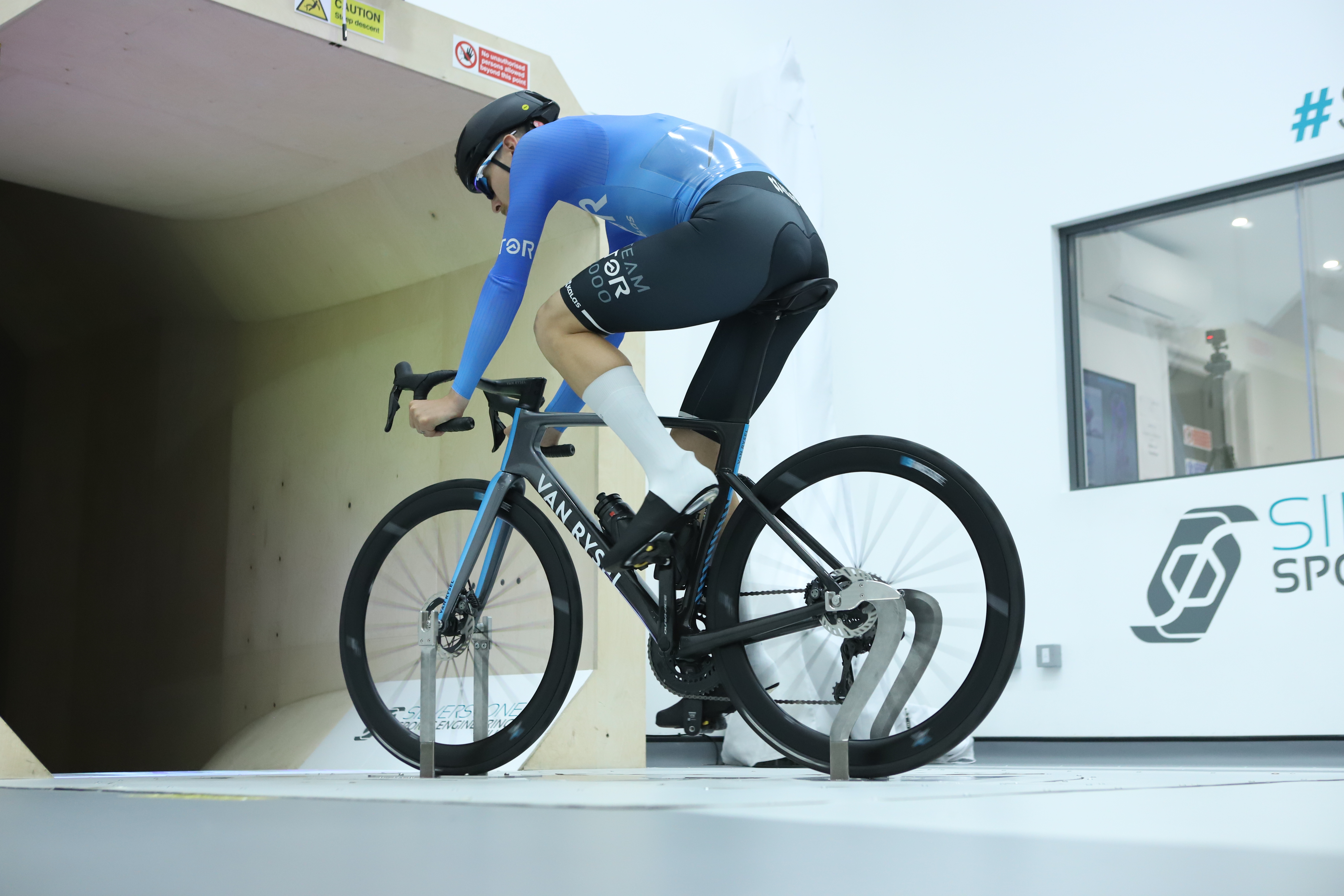Which superbike is fastest? Cyclingnews takes over £100k of WorldTour bikes to the wind tunnel to find out
Factor, Scott and Cervélo come out favourably, with a potential saving of up to 32 watts against entry-level baseline

Last week, the tech team here at Cyclingnews took 11 WorldTour-level road bikes to a wind tunnel to find out which was the most aerodynamic.
Perhaps the biggest test of its kind in recent times, it comprised bikes with a total value of over £100,000, including the Specialized S-Works Tarmac SL8, the Gen 8 Trek Madone SLR, as well as the new Canyon Aeroad CFR and Pinarello Dogma F.
The full list of bikes, in alphabetical order, is as follows:
- Cannondale SuperSix Evo 4
- Canyon Aeroad CFR
- Cervelo S5
- Factor Ostro VAM
- Giant Propel Advanced SL 0
- Look Blade 795 RS
- Pinarello Dogma F
- Scott Foil RC Pro
- Specialized S-Works Tarmac SL8
- Trek Madone SLR 7 Gen 8
- Van Rysel RCR Pro
- As well as a baseline bike, a Trek Emonda ALR from 2015
The test comprised two runs – with and without a rider – across seven yaw angles (-15, -10, -5, 0, +5, +10, +15) for a total of 14 captures per bike. It was performed at the renowned Silverstone Sports Engineering Hub (SSE Hub) in Northamptonshire, England.
If you are wondering what exactly yaw angles are don't worry. Yaw refers to the angle of the wind as it meets the bike and rider. Imagine a block headwind and then varying degrees of crosswinds and the effect this has on your cycling, speed and power outputs. Testing at different yaw or wind angles helps paint a clearer picture of how aerodynamic a bike is overall.
The full results can be seen in our 7000-word write-up of the wind tunnel road bike test.
The SSE Hub has grown over the past five years to become one of the most widely respected bicycle performance analysis centres in the world. Alongside devices to test pedalling efficiency, tyre rolling resistance and drivetrain efficiency, its wind tunnel is used by countless WorldTour teams, bike manufacturers and designers of aero clothing. It has been at the heart of several high-profile developments in recent months, including Mark Cavendish's optimisation ahead of winning his record-breaking 35th Tour de France stage, and Wout van Aert's decision to run 'double discs' in the Paris Olympics Time Trial.
The latest race content, interviews, features, reviews and expert buying guides, direct to your inbox!
The bikes tested were all high-end, WorldTour-ready race bikes, aside from the aluminium Trek Emonda baseline bike. The cheapest on test was the SRAM Force AXS equipped Trek Madone SLR 7 (gen 8), which would set buyers back £8,499.99. The Van Rysel and Canyon Aeroad were slightly higher in price at £8,999.99 and £9,299.99 respectively, but with the higher-spec Shimano Dura-Ace groupsets.
Although that's still a significant sum of money, it's a far cry from the most expensive bike on test, the Pinarello Dogma F, which comes in at £12,500.00 with Dura-Ace and Princeton Carbonworks wheels.
There were many learnings and takeaways, but among the key findings was that with a rider on the bike, modern bikes are mostly within the same ballpark. The difference between the best and worst is no more than 14 watts.
Despite that, the test concluded that the Factor OSTRO VAM, the Cervélo S5 and the Scott Foil came out fastest, all sitting a small but significant step above the competition in the bike-only test.
In the middle of the table in that bike-only test, the lightweight Specialized Tarmac SL8 held its own well against bikes carrying significantly more weight, and the Look Blade 795 RS did come out at the back of the pack.
Pertinently though, there was no real correlation to price. The more budget-friendly models held their own against their more expensive competitors. Of course, all the bikes in the test were high-spec, and nobody is claiming £8,499 is a budget bike, but if ever you find yourself weighing up spending an additional £4000 on the Dogma F, know that your motivations for doing so should lie away from aerodynamic performance.
Also interesting, and indeed reassuring, is that when compared to the baseline bike, all modern bikes are significantly faster. All the effort that designers and aerodynamicists have been putting in over the years is paying off, and you can indeed buy speed. However, given the saving is 32.29 watts at most, it's pertinent to look at the bigger picture before deciding you need to upgrade.
Bikes are expensive, so even with that big a watt saving, the price-per-watt ratio is pretty diabolical. Of course, there are countless other reasons to buy a bike beyond the aero performance, but speaking purely in this realm, given Cyclingnews' recent wind tunnel road helmet test found a saving of up to 12.8 watts between the best and worst, and that a new helmet costs a few hundred pounds/dollars rather than many thousands, you might want to look there first.
Cyclingnews will be heading back to the SSEHub in a few weeks for another test, the details of which will come in good time. The pursuit of empirical data never ends.

Josh is Associate Editor of Cyclingnews – leading our content on the best bikes, kit and the latest breaking tech stories from the pro peloton. He has been with us since the summer of 2019 and throughout that time he's covered everything from buyer's guides and deals to the latest tech news and reviews.
On the bike, Josh has been riding and racing for over 15 years. He started out racing cross country in his teens back when 26-inch wheels and triple chainsets were still mainstream, but he found favour in road racing in his early 20s, racing at a local and national level for Somerset-based Team Tor 2000. These days he rides indoors for convenience and fitness, and outdoors for fun on road, gravel, 'cross and cross-country bikes, the latter usually with his two dogs in tow.